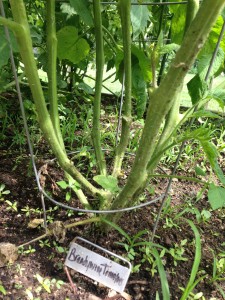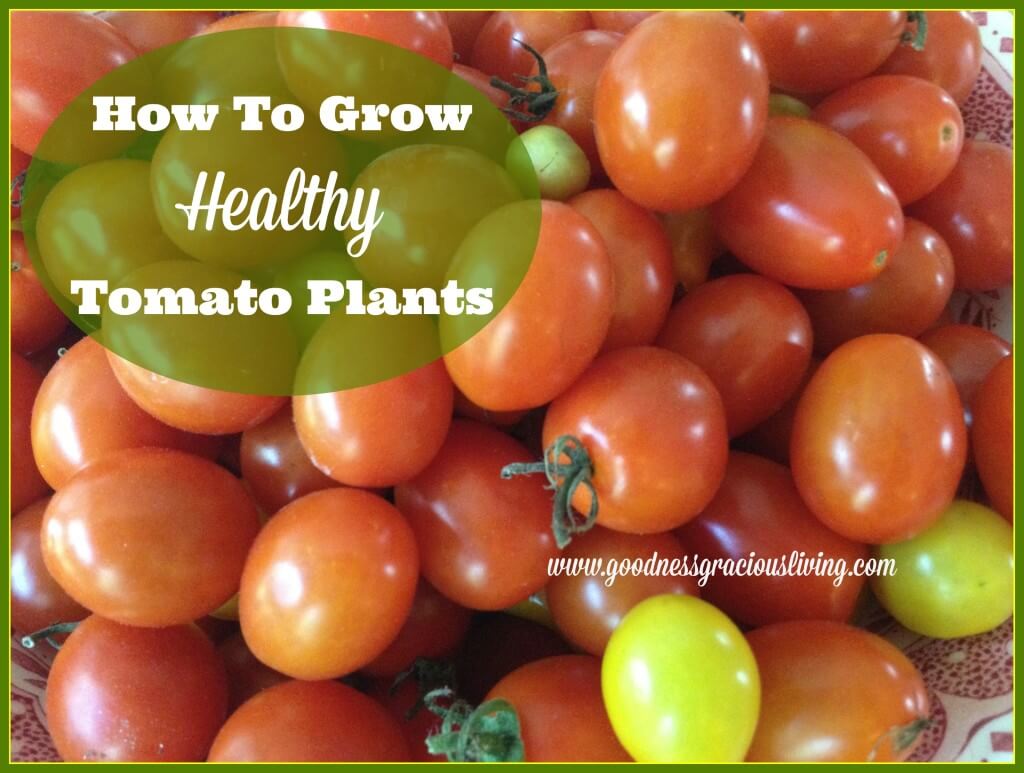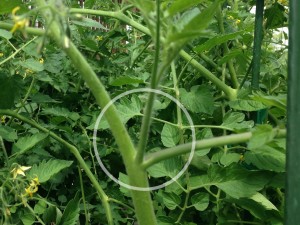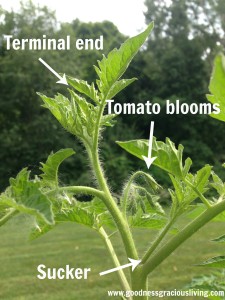How to document and explain your IBS for the best medical care.
How To Grow Healthy Tomato Plants
I plant my tomato plants with one goal in mind: To get as many tomatoes to harvest as possible to make my delicious Roasted Grape Tomato Sauce. We just defrosted the last batch from the previous summer with the hope that we will be restocking our winter supply by the end of this summer. But the only way to ensure a freezer full of sauce is to grow lots and lots of healthy grape (and cherry, and pear) tomato plants. Of course, fertilization, sunshine and water are major keys to your tomato plant growth, but it takes a bit more effort to keep those tomatoes growing. Here are five easy steps to growing healthy tomato plants…
1. Remove the suckers!
Those leaves that sprout in the crevices between the main stalk and the branch with the tomato flowers are called suckers. They are aptly named because they take nutrients away from the tomato branch and put it toward producing a leaf branch that serves no purpose other than to make your tomato plant more unmanageable and less fruitful. The best way to remove these suckers is to pinch them off at the base. If they are a bit larger, bend them back and forth at the base until they come free. This is better than using a knife or shears that may contain bacteria and can infect the plant. It’s best to prune suckers a few times a week, since they are constantly popping up.
2. Prune dead weight
At the base of the plant, you may notice yellow leaves, or leaves with spots. Remove them! The yellow leaves are dead and the spotted ones may be a sign of a fungus. Remove them in the same way you remove suckers; at the base of the leaves and with your hands. By doing so, you reduce the risk of a fungal infection, and critters enjoying those tasty leaves. It’s perfectly safe to remove the bottom leaves up to the first tomato bloom, once the plant is above a foot tall.
3. Water at the base
In the same vein as pruning away dead and dying foliage to preserve the healthy plant, watering at the base of, or as close to, the tomato plants help to keep the leaves dry. Dry leaves mean less risk of a fungal infection. Also, the roots are the part of the tomato plant that “drink” the water, so it makes sense to water as close to them as possible.

Once the dead leaves are removed, there is plenty of space to water while not soaking the foliage (please ignore the weeds).
4. Just squish ’em
I mean the bugs, not the tomato plants. If you find pests in your garden, there are a number of ways to treat them (here’s another), but your first line of defense is to kill them. Smush them. Take them between your fingers and flatten them until they crunch and their guts come out. I am not a violent person by nature, but I have lost way too many vegetable plants to pests and now I fight back. The longer you let them live, the more often they procreate or lay eggs and then you will never reach harvest.
5. Before the first frost, focus on fruit.
At the end of the season, you might notice that you have a number of unripe tomatoes left on your vine, but winter (or a chilly fall night) may be on the way and ruin their chances of ripening on the vine. To help them do so, it’s time to trim the terminal end. It is at the top of the main stalk and continues to grow, unless it’s cut off. Cut off the entire top. Once it is removed, the nutrients of the plant are transported to the tomatoes to help them ripen, rather than to the main stalk to help it grow taller.
If you follow these five easy steps, your chances of growing healthy tomato plants and harvesting their yummy goodness will be far greater than if you plant them and wait for them to “do their thing.” I learned the hard way years ago that healthy tomato plants cannot thrive unless I do “my thing.” I would love to hear how your garden is growing. Feel free to share in the comments section!
PS Did you know that I might have DIY skills, but my real expertise is as a Registered Dietitian, subscribing to a non-diet approach to wellness? Learn a bit more about it by exploring my “diet-free living” posts on my blog. Want to take a deeper dive? Download my FREE e-book, “The Inner Girl Power Challenge,” and kick the dieting habit for good!

Beth Rosen
Eating Attitudes™ & Gut Expert
Beth Rosen, MS, RD, CDN is a Registered Dietitian and owner of Beth Rosen Nutrition. She practices a non-diet philosophy and is a Health at Every Size" practitioner. Her goal is to end the pain of diet culture, one person at a time. Beth's techniques and programs empower chronic dieters, and those who consider themselves emotional and /or stress eaters, to ditch the vicious cycle of dieting, eat fearlessly by removing Food and diet rules, and mend their relationship with food and their bodies. Beth's works face-to-face with clients in Southbury, CT, and virtually with clients, worldwide.









